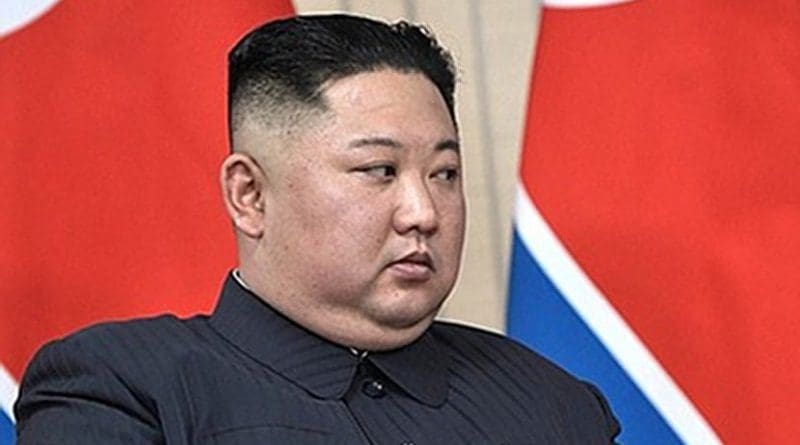East Asia’s Murky Future Due To North Korea’s Escalatory Behavior – Analysis
North Korean President Kim Jong Un last month declared the country a nuclear state. Since then, Pyongyang has been testing international resolve. As the war in Europe begins to escalate with Russia’s absorption of Ukrainian territory, North Korea is acting up in ways that will affect the northwest Pacific Ocean theater.
Pyongyang is trying to revamp its battered economy ahead of the anniversary of the foundation of the ruling Workers’ Party on Oct. 10 — a big target date for the country and perhaps its nuclear weapons program. The potential for a nuclear test and its timing, given what is happening with the war in Europe, is now under consideration by many state actors. Japan and South Korea are behaving in a delicate way as North Korea’s threat grows by signing on to greater ties with the West and with NATO in particular.
North Korea has twice tested its ballistic missile systems in recent days. These can be added to the already long list of such tests held over the course of the past year. Political messaging is now key, as Pyongyang’s latest tests were timed to coincide with US Vice President Kamala Harris’s visit to South Korea and specifically to the demilitarized zone. A correlation between missile tests and a drop in Chinese aviation sorties over the Taiwan Strait may also be connected.
But the big event will be Pyongyang’s nuclear test. South Korea’s intelligence agency last week said that its neighbor had completed the preparations for a nuclear test. The test window is from the ruling party’s anniversary meeting until Nov. 7. Preparations for a nuclear test by North Korea, which would be its first since 2017, have been completed at the Punggye-ri test tunnel, where the state conducted six underground tests from 2006 onward. The timing of the test could also be determined by events like the 20th Chinese Communist Party congress on Oct. 16 — China being North Korea’s main ally — and the US midterm elections, which are scheduled for Nov. 8.
Many ask how many warheads North Korea possesses. According to research, the state has produced sufficient fissile material to build 45 to 55 nuclear weapons (if all this material is used for weapons production) but has likely assembled fewer than that — potentially 20 to 30. As per that estimate, most of the warheads would likely be single-stage fission weapons with possible yields of 10 to 20 kilotons, akin to those demonstrated in the 2013 and 2016 tests, with only a few thermonuclear warheads. These statistics mean that a North Korean nuclear test would only be a sample of its larger capabilities in terms of constructing a weapon. The ability to put that weapon on a missile launcher is another technical question.
How North Korea’s neighbors react to its behavior is important, and not totally unexpected. China is reengaging with Pyongyang by resuming, for example, freight train services. A freight train connection between the Chinese border city of Dandong and North Korea’s Sinuiju resumed last month. The cross-border line had been on hold since 2020, as North Korea kept its border closed to stave off the COVID-19 pandemic.
Pyongyang is undoubtedly rushing to rebuild the country’s economy as its key October holiday approaches. Kim has made it clear to party members about how he sees the country as a nuclear power, while emphasizing infrastructure projects to help North Korea grow. A “grand canal” may be built across the country to allow better economic linkages. Pyongyang also plans to resume cargo train services to and from Russia, its other significant partner, with which it appears to have an ever-growing relationship.
The US is countering these North Korean moves by conducting joint military exercises with Seoul. The two countries are taking part in four days of joint maneuvers, involving at least 20 warships and dozens of aircraft. The 101,000-ton aircraft carrier USS Ronald Reagan is leading a US battle group made up of guided-missile destroyers and the USS Annapolis, a Los Angeles-class fast attack submarine. This is the first joint US-South Korean exercise with an aircraft carrier since 2017 and is meant to send a significant message to Pyongyang and its allies. Last week’s North Korean missile tests were also tied to the activation cycle of this exercise.
Meanwhile, the tensions between China and Taiwan also feed into larger strategic calculations in Northeast Asia. South Korean President Yoon Suk-yeol said last week that, in the event of a conflict breaking out around Taiwan, North Korea was expected to launch an attack against the South. China and North Korea recognize the strategic advantage of simultaneous conflicts on the Korean Peninsula and Taiwan and the challenges that would pose to the defending states.
Overall, when North Korea does conduct its next nuclear test, the reason is clear: President Kim is guiding his country to a “Juche” future, where self-sufficiency in nuclear weapons and their launch vehicles continues to be the main driver of state atomic policy. The potential for East Asia to end up in a two-front war — China-Taiwan and North Korea-South Korea — only grows higher with time. There are moves to counter North Korea and its partners, but the future is murky.

